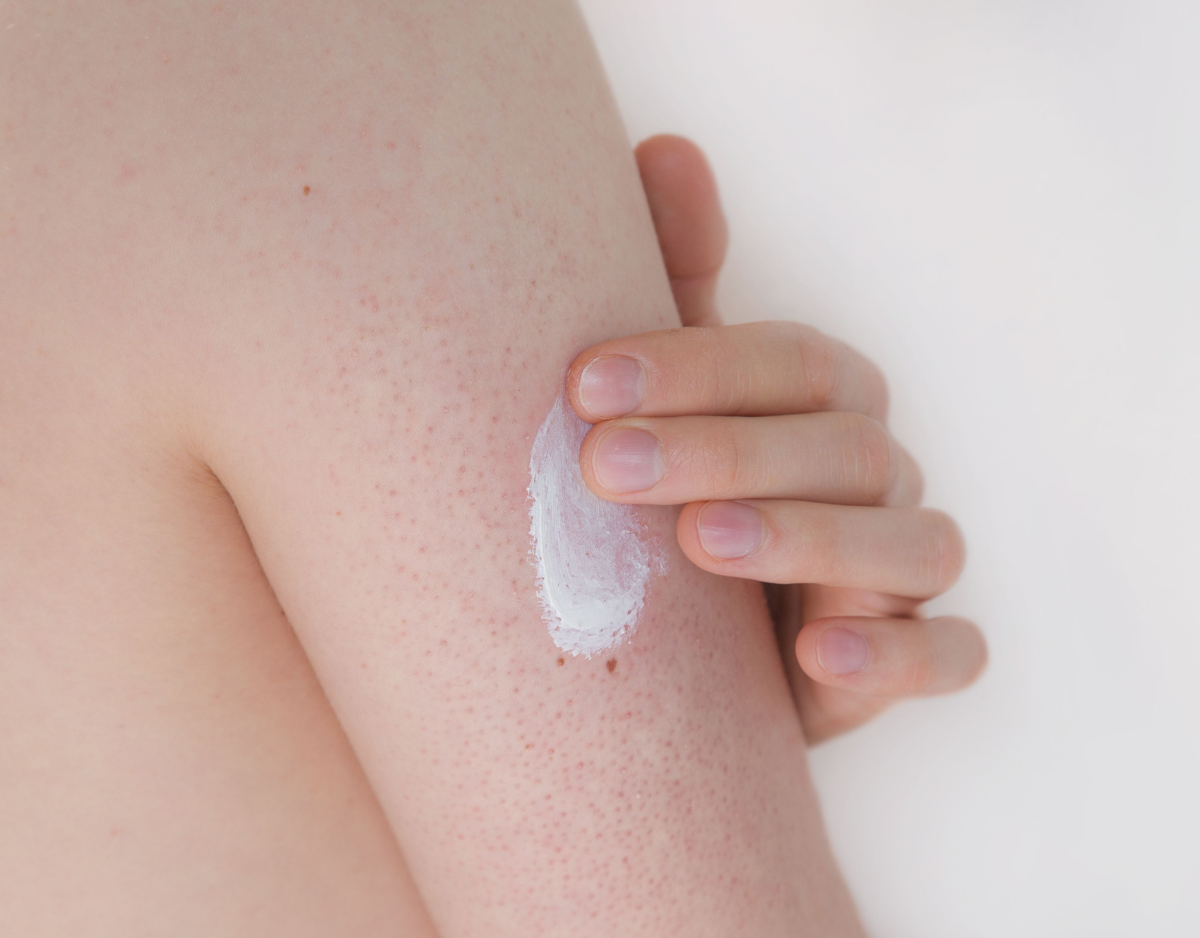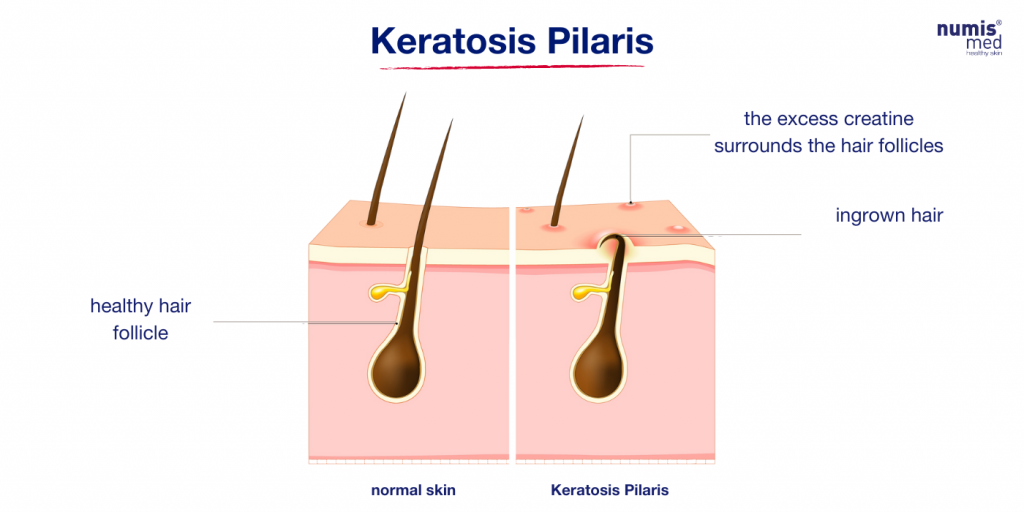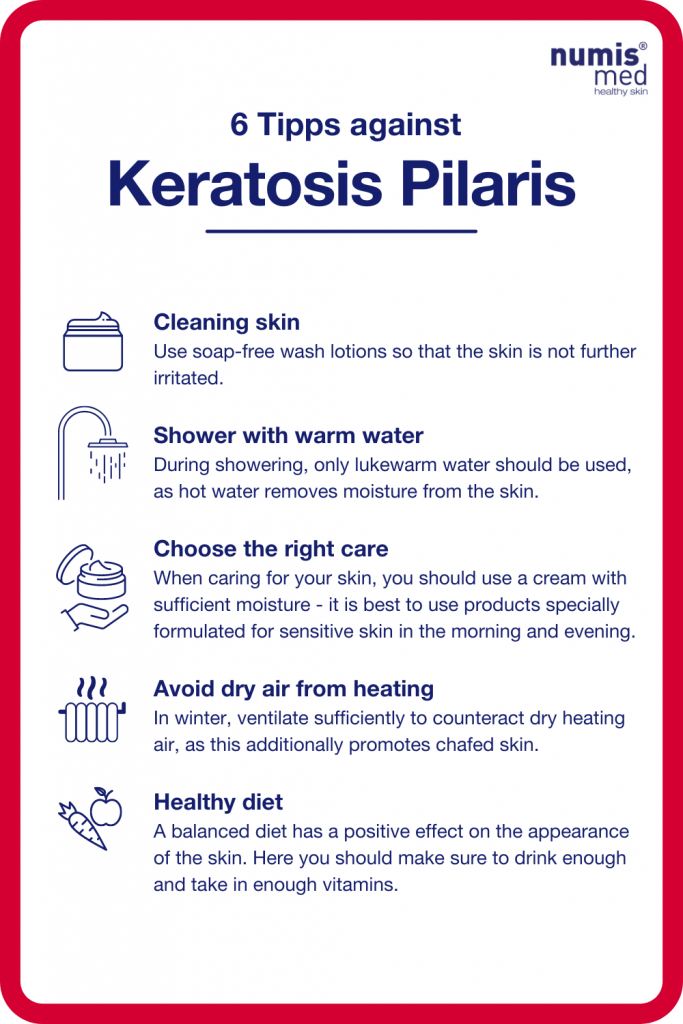

Keratosis pilaris or also known as strawberry skin on the arm is a non-contagious cornification disorder of the skin. In technical terminology, this is called keratosis pilaris. This is noticeable by small, often red pimples on the skin, because the openings of the hair follicles in the skin are blocked due to increased or false keratin production – a substance essential for hair, nails and skin. With a suitable care routine, such as frequent application of a urea and salicylic/fruit acid body lotion, the symptoms can be alleviated. This binds moisture in the skin, supports the desquamation of dead skin cells and makes the skin smoother and more supple.
The first symptoms of keratosis pilaris usually become apparent in childhood, more than half of all children and adolescents suffer from it. The symptoms are more noticeable during puberty while improvement can be seen with increasing age.Keratosis pilaris is mostly located on the (upper) arms, thighs, and buttocks. Small white or red pimples – comparable to “goose bumps” – indicate the cornification disorder.
Some people also describe it as “strawberry skin” on the arm or pimples on the inner thigh. Although the pinhead-sized elevations usually do not cause itching or pain, they are perceived as very disturbing cosmetically by those affected. If itching occurs (e.g. in patients with atopic eczema), frequent and intensive scratching can, however, lead to inflammation.
The exact causes of keratosis pilaris have not been conclusively determined. However, since a family connection can be established, a genetic cause is highly probable.
As current research indicates, keratosis pilaris develops due to incorrect keratin production and maybe over-production of keratin in the hair follicles. Another factor might be abnormal growth of hairs. Altogether, these conditions result in accumulation of keratin in the follicle openings. The hair follicle opening becomes blocked and the outer layer of skin thickens and rises. As a result, pimple-like elevations appear.

Since dry skin also contributes to the occurrence and aggravation of skin irritations, it is important to consider external factors in this situation, such as the weather during the change of seasons. For this reason, keratosis pilaris often worsens in the winter. This is due to increased moisture loss from the skin and decreased sebaceous gland activity caused by low humidity. Therefore, in winter keratotis pilaris might lead to inflammation of the skin, called eczema. To avoid this aggravation it is necessary to use good moisturizers in the affected areas during winter time.
Keratosis Pilaris can potentially affect the face. In this case, we speak of subgroups of keratosis pilaris or certain variants. Depending on the subtype of keratosis pilaris, the rough papules on a reddish background may appear especially on the cheeks.
Unfortunately, there is no complete cure for keratosis pilaris. However, a suitable skin care routine and creams can alleviate it. The first prerequisite for successfully combating the hyperkeratotic skin areas is thorough skin care. If the skin is only slightly affected, the regular use of moisturizing skin lotions promises lasting improvement.
Skin lotions with urea are particularly suitable for daily skin care. Urea binds moisture in the skin and counteracts chafed skin. To achieve the desired effect, lotions or creams should be used without fragrances and dyes if possible and applied to the affected areas of the body several times a day.
In addition to the daily urea-containing moisturizing routine, fruit acid (AHA) or salicylic acid (BHA) lotions or creams can be applied to the affected skin areas. In severe cases, peels with glycolic acid, lactic acid or salicylic acid may also be done for severe keratosis pilaris. For this, you should consult your dermatologist if the symptoms cannot be reduced despite regular care with moisturizing lotions containing urea.
